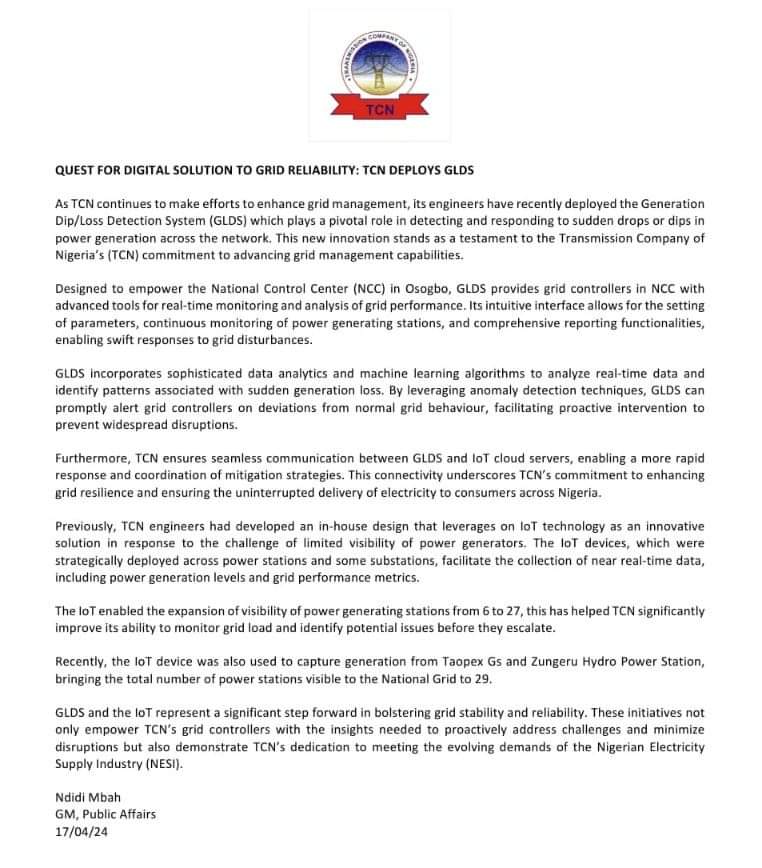As TCN continues to make efforts to enhance grid management, its engineers have recently deployed the Generation Dip/Loss Detection System (GLDS) which plays a pivotal role in detecting and responding to sudden drops or dips in power generation across the network. This new innovation stands as a testament to the Transmission Company of Nigeria’s (TCN) commitment to advancing grid management capabilities.
Designed to empower the National Control Center (NCC) in Osogbo, GLDS provides grid controllers in NCC with advanced tools for real-time monitoring and analysis of grid performance. Its intuitive interface allows for the setting of parameters, continuous monitoring of power generating stations, and comprehensive reporting functionalities, enabling swift responses to grid disturbances.

GLDS incorporates sophisticated data analytics and machine learning algorithms to analyze real-time data and identify patterns associated with sudden generation loss. By leveraging anomaly detection techniques, GLDS can promptly alert grid controllers on deviations from normal grid behaviour, facilitating proactive intervention to prevent widespread disruptions.
Furthermore, TCN ensures seamless communication between GLDS and IoT cloud servers, enabling a more rapid response and coordination of mitigationstrategies. This connectivity underscores TCN’s commitment to enhancing grid resilience and ensuring the uninterrupted delivery of electricity to consumers across Nigeria.
Previously, TCN engineers had developed an in-house design that leverages on IoT technology as aninnovative solution in response to the challenge of limited visibility of power generators. The IoT devices, which were strategically deployed across power stations and some substations, facilitate the collection of near real-time data, including power generation levels and gridperformance metrics.
The IoT enabled the expansion of visibility of power generating stations from 6 to 27, this has helped TCN significantly improve its ability to monitor grid load and identify potential issues before they escalate.Recently, the IoT device was also used to capture generation from Taopex Gs and Zungeru Hydro Power Station, bringing the total number of power stations visible to the National Grid to 29.
GLDS and the IoT represent a significant step forward in bolstering grid stability andreliability. These initiatives not only empower TCN’s grid controllers with the insights needed to proactively address challenges and minimize disruptions but also demonstrate TCN’s dedication to meeting the evolving demands of the Nigerian Electricity Supply Industry (NESI).Ndidi Mbah
GM, Public Affairs
17/04/24




